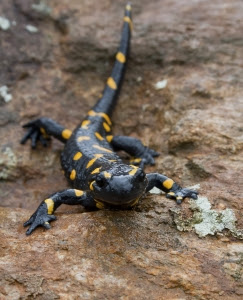Salamanders Have "Living Fossil" Status
So often, evolutionary science is a game of words. Remember the new golden rule, that whoever makes the definitions makes the rules. In this case, it's the term "living fossils". This is generally applied when a plant or animal is found alive and well, but had been declared extinct for "millions of years". The term "living fossil" is a bit of a loaded term, implying that evolution is true despite a bit of a glitch.
They also want the best of both worlds. Evolution is a "fact", sometimes called a law as if it was a kind of inexorable force. So when these "living fossils" are discovered virtually unchanged, people will say something like, "It didn't evolve because it didn't have to". What fallacy is that, No True Evolution, or special pleading?
Salamanders are a bit different in the "living fossil" realm, since they have not been declared extinct while in hiding and then relocated. Still, the propaganda positively progresses past the point of perspicuity.
They also want the best of both worlds. Evolution is a "fact", sometimes called a law as if it was a kind of inexorable force. So when these "living fossils" are discovered virtually unchanged, people will say something like, "It didn't evolve because it didn't have to". What fallacy is that, No True Evolution, or special pleading?
 |
| stock.xchng / Fire Salamander / gc85 |
You can finish reading the rest at "Salamanders are ‘living fossils’!"You’ve heard of ‘living fossils’? These are usually announced (often with much media fanfare) when something known only from the fossil record, long presumed extinct for millions of years, is unexpectedly found living somewhere. Examples of such living fossils include the coelacanth fish, the Wollemi pine tree (see Missing? or misinterpreted?), and the ‘Gladiator’ insect.But the latest animal to be pronounced a living fossil is one that has been familiar to generations of people for as long as anyone can remember; namely, the salamander.So how can something long known to be living, suddenly be dubbed a ‘living fossil’?Salamanders have always been salamanders.